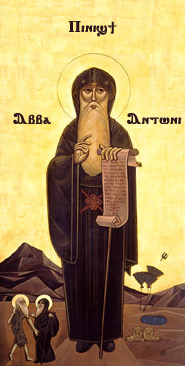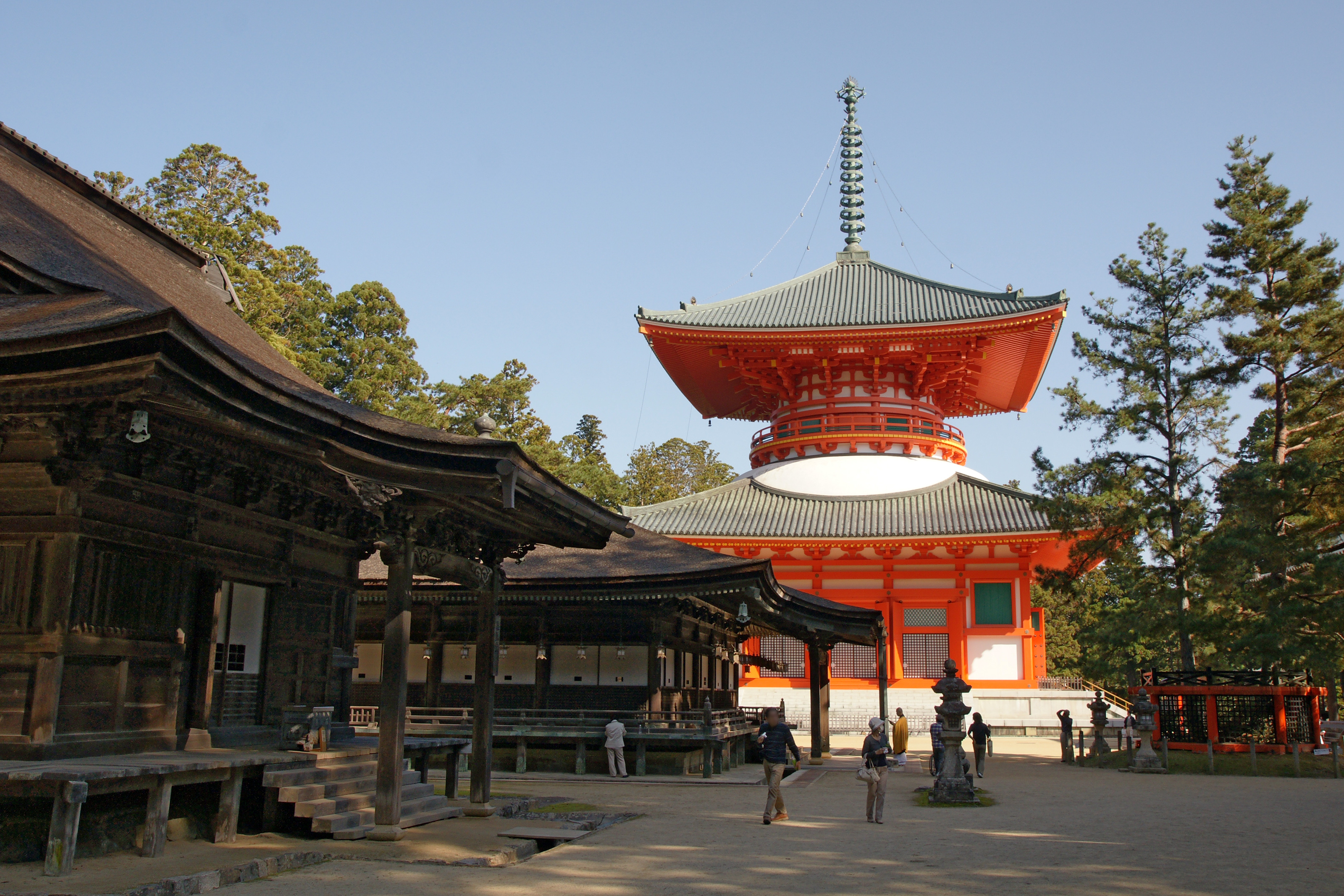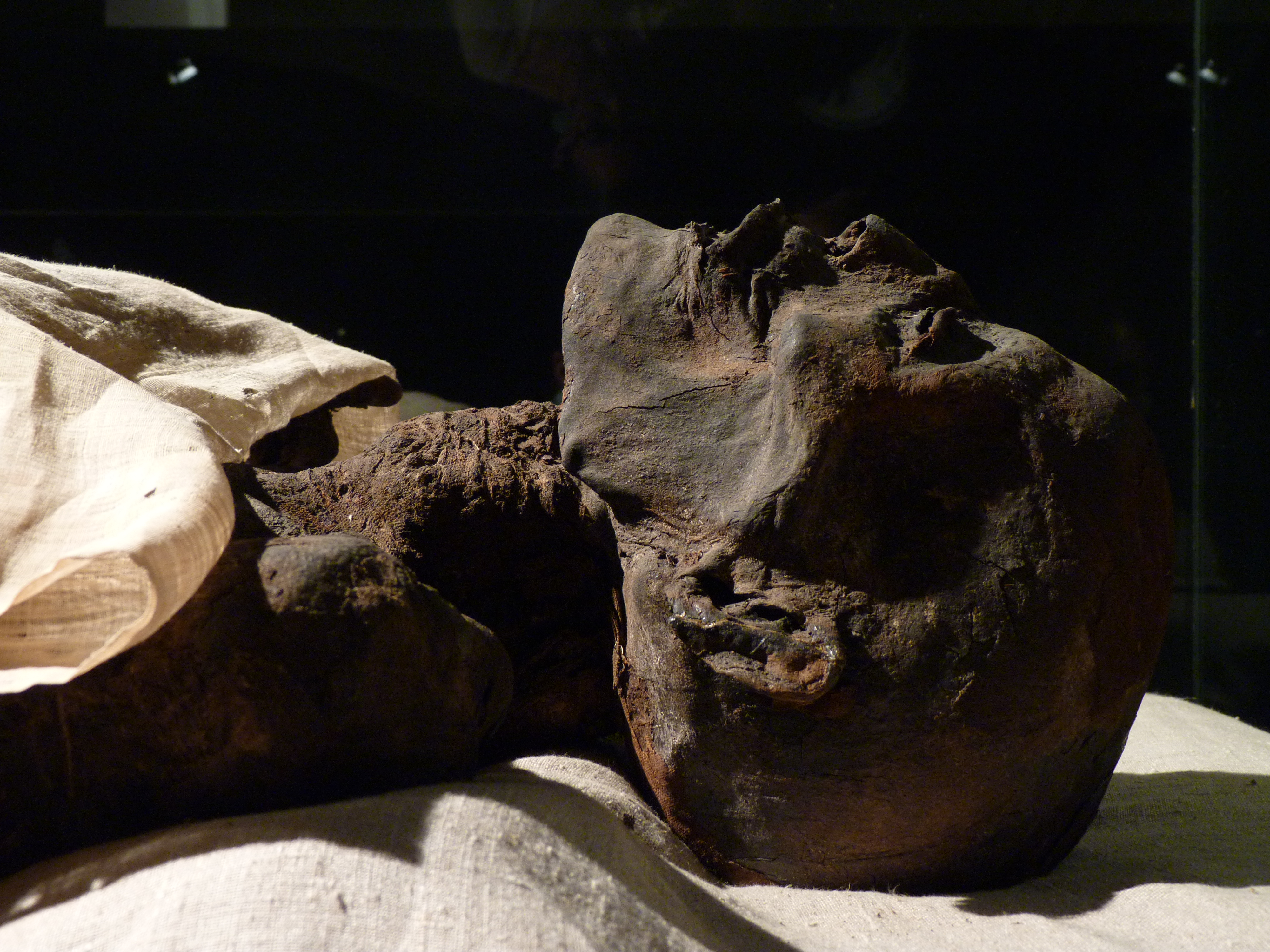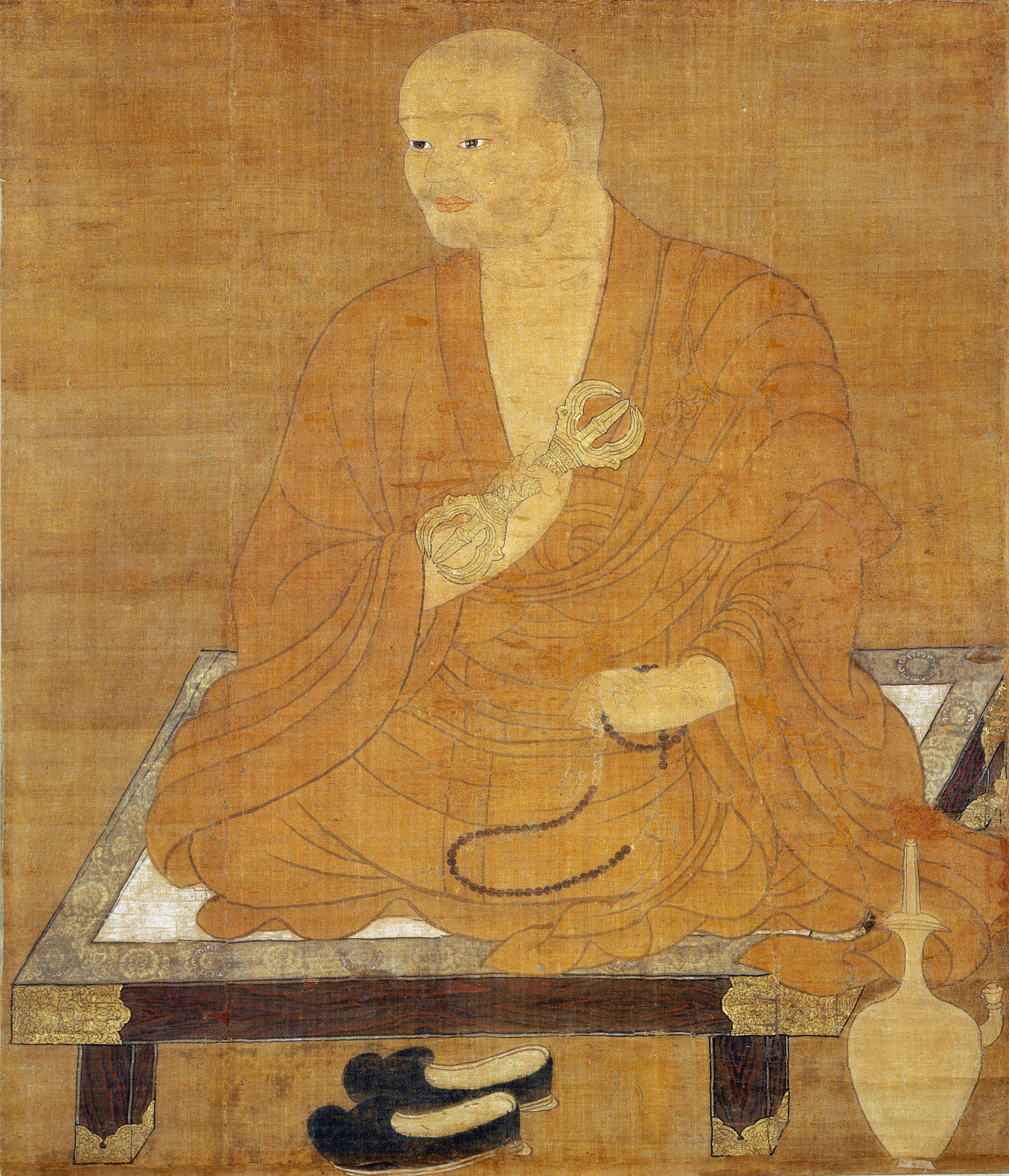|
Sokushinbutsu
is a type of Buddhist mummy. In Japan the term refers to the practice of Buddhist monks observing asceticism to the point of death and entering mummification while alive. Although mummified monks are seen in a number of Buddhist countries, especially in Southeast Asia where monks are mummified after dying of natural causes, it is only in Japan that monks are believed to have induced their own death by starvation. There is a common suggestion that Shingon school founder Kukai brought this practice from Tang China as part of secret tantric practices he learned. During the 20th century, Japanese scholars found very little evidence of self-starvation of . They rather concluded that mummification took place after the demise of the monk practising this kind of asceticism, as seen in Southeast Asian lands. Origin There is at least one "self-mummified" 550-year-old corpse in existence: that of a Buddhist monk named Sangha Tenzin in a northern Himalayan region of India, visible ... [...More Info...] [...Related Items...] OR: [Wikipedia] [Google] [Baidu] [Amazon] |
Buddhist Mummies
Buddhist mummies, also called flesh body bodhisattvas, full body sariras, or living buddhas (Sokushinbutsu) refer to the bodies of Buddhist monks and nuns that remain incorrupt, without any traces of deliberate mummification by another party. Many were destroyed or lost to history. In 2015, the Hungarian Natural History Museum exhibited a Buddhist mummy hidden inside a statue of Buddha, during its first tour outside China. Methods Self-mummification is a common method in China. Examples of Monks who practiced this include Tao Wing (道榮) or Yuet Kai (月溪). Some practitioners have covered their own bodies with clay or salt. According to Victor H. Mair in the Discovery Channel series ''The Mystery of the Tibetan Mummy'', the self-mummification of a Tibetan monk, who died ''ca.'' 1475 and whose body was retrieved relatively incorrupt in the 1990s, was achieved by the sophisticated practices of meditation, coupled with prolonged starvation and slow self-suffocation using a specia ... [...More Info...] [...Related Items...] OR: [Wikipedia] [Google] [Baidu] [Amazon] |
Asceticism
Asceticism is a lifestyle characterized by abstinence from worldly pleasures through self-discipline, self-imposed poverty, and simple living, often for the purpose of pursuing Spirituality, spiritual goals. Ascetics may withdraw from the world for their practices or continue to be part of their society, but typically adopt a Frugality, frugal lifestyle, characterised by the renunciation of Economic materialism, material possessions and physical pleasures, and also spend time fasting while concentrating on the practice of religion, prayer, or meditation. Some individuals have also attempted an ascetic lifestyle to free themselves from addictions to things such as Alcoholic beverage, alcohol, tobacco, Drug, drugs, entertainment, Sexual intercourse, sex, food, etc. Asceticism has been historically observed in many religious and philosophical traditions, most notably among Ancient Greek philosophy, Ancient Greek philosophical schools (Epicureanism, Gymnosophists, Gymnosophism, Stoic ... [...More Info...] [...Related Items...] OR: [Wikipedia] [Google] [Baidu] [Amazon] |
Sangha Tenzin
Lama Sangha Tenzin was a Buddhist monk. He is thought to have died in the 1500s. His remains are preserved as a mummy, which was discovered in 1975 in Gue, a small village in the Spiti valley, Himachal Pradesh, India. Tenzin's tomb was established in the village near the Line of Actual Control (LAC) in the Spiti Valley. His body is the only mummy of a Buddhist monk in India that was self-mummified. However, the mummy was buried in an earthquake, leading the body to be rediscovered by ITBP personnel in 2004 when they were constructing roads in the area. When found, the body was naturally preserved in a thick glass box without the use of chemical preservatives. Originally from Tibet, Sangha Tenzin came to Gue for meditation when he was 45 years old. Folklore According to local folklore, Tenzin sacrificed his life for the survival of the village from scorpions. Legend says the mummy is alive and hence became known as "living Buddha". Legend claims that the hair and nails are s ... [...More Info...] [...Related Items...] OR: [Wikipedia] [Google] [Baidu] [Amazon] |
Mokujiki
''Mokujiki'' (木食, "eating of trees/wood") is a Japanese ascetic practice involving abstinence from cereals and cooked foods, replaced by consuming foods gathered from mountain forests. Adherents often rely primarily on flour made from buckwheat or wild oats, supplementing their diet with pine bark, chestnuts, torreya nuts, grass roots, and other wild plants. This mountain diet is considered to possess spiritual energy and purity, contrasting with typical worldly diets based on cereals. Some practitioners observe it annually for brief periods on sacred mountains, while others commit for years or even vow to practice it for life. Those who take the lifetime vow adopt ''mokujiki'' as part of their religious name. The practice was a critical part of preparation for self-mummification. History ''Mokujiki ("eating wood")'' implies the active consumption of food from forests. A related term, , refers specifically to abstention from cereals. A practitioner abstains from either fiv ... [...More Info...] [...Related Items...] OR: [Wikipedia] [Google] [Baidu] [Amazon] |
Shingon Buddhism
is one of the major schools of Buddhism in Japan and one of the few surviving Vajrayana lineages in East Asian Buddhism. It is a form of Japanese Esoteric Buddhism and is sometimes called "Tōmitsu" (東密 lit. "Esoteric uddhismof Tō-ji"). The word ''shingon'' is the Japanese reading of the Chinese word ('), which is the translation of the Sanskrit word mantra. The Zhēnyán lineage was founded in China (c. 7th–8th centuries) by Indian vajrācāryas (esoteric masters) like Śubhakarasiṃha, Vajrabodhi and Amoghavajra. These esoteric teachings would later flourish in Japan under the auspices of a Buddhist monk named Kūkai (, 774–835), who traveled to Tang China and received these esoteric transmissions from a Chinese master named Huiguo (746–805). Kūkai established his tradition at Mount Kōya (in Wakayama Prefecture), which remains the central pilgrimage center of Shingon Buddhism. The practice of the Shingon school stresses that one is able to atta ... [...More Info...] [...Related Items...] OR: [Wikipedia] [Google] [Baidu] [Amazon] |
Shugendō
is a syncretic Esoteric Buddhist religion, a body of ascetic practices that originated in the Nara Period of Japan having evolved during the 7th century from an amalgamation of beliefs, philosophies, doctrines and ritual systems drawn primarily from Esoteric Buddhism, local folk-religious practices, Shinto, mountain worship, and Taoism. The final purpose of ''Shugendō'' is for practitioners to find supernatural power and save themselves and the masses by conducting religious training while treading through steep mountain ranges. Practitioners are called or . The mountains where ''shugendo'' is practiced are all over Japan, and can span multiple mountains within one range such as the Ōmine mountain range with Mount Hakkyō and Mount Ōmine or the Ishizuchisan mountain range with Kamegamori and Tengudake. The ''Shugendō'' worldview includes a large pantheon of deities (which include Buddhist and Shinto figures). Some of the most important figures are the tantric B ... [...More Info...] [...Related Items...] OR: [Wikipedia] [Google] [Baidu] [Amazon] |
Mummification
A mummy is a dead human or an animal whose soft tissues and organs have been preserved by either intentional or accidental exposure to chemicals, extreme cold, very low humidity, or lack of air, so that the recovered body does not decay further if kept in cool and dry conditions. Some authorities restrict the use of the term to bodies deliberately embalmed with chemicals, but the use of the word to cover accidentally desiccated bodies goes back to at least the early 17th century. Mummies of humans and animals have been found on every continent, both as a result of natural preservation through unusual conditions, and as cultural artifacts. Over one million animal mummies have been found in Egypt, many of which are cats. Many of the Egyptian animal mummies are sacred ibis, and radiocarbon dating suggests the Egyptian ibis mummies that have been analyzed were from a time frame that falls between approximately 450 and 250 BC. In addition to the mummies of ancient Egypt, delib ... [...More Info...] [...Related Items...] OR: [Wikipedia] [Google] [Baidu] [Amazon] |
Shingon
is one of the major schools of Buddhism in Japan and one of the few surviving Vajrayana lineages in East Asian Buddhism. It is a form of Japanese Esoteric Buddhism and is sometimes called "Tōmitsu" (東密 lit. "Esoteric [Buddhism] of Tō-ji"). The word ''shingon'' is the Kan-on, Japanese reading of the Traditional Chinese characters, Chinese word ('), which is the translation of the Sanskrit word mantra. The Chinese Esoteric Buddhism, Zhēnyán lineage was founded in China (c. 7th–8th centuries) by Indian Vajracharya, vajrācāryas (esoteric masters) like Śubhakarasiṃha, Vajrabodhi and Amoghavajra. These esoteric teachings would later flourish in Japan under the auspices of a Buddhist monk named Kūkai (, 774–835), who traveled to Tang dynasty, Tang China and received these esoteric transmissions from a Chinese master named Huiguo (746–805). Kūkai established his tradition at Mount Kōya (in Wakayama Prefecture), which remains the central pilgrimage center of Sh ... [...More Info...] [...Related Items...] OR: [Wikipedia] [Google] [Baidu] [Amazon] |
Self-immolation
Self-immolation is the act of setting oneself on fire. It is mostly done for political or religious reasons, often as a form of protest or in acts of martyrdom, and known for its disturbing and violent nature. Etymology The English word '' immolation'' originally meant (1534) "killing a sacrificial victim; sacrifice" and came to figuratively mean (1690) "destruction, especially by fire". Its etymology was from Latin "to sprinkle with sacrificial meal ( mola salsa); to sacrifice" in ancient Roman religion. In the Mewar region of India, women practiced a form of self-immolation called '' Jauhar'' to avoid being raped by invading armies. Effects Self-immolators frequently use accelerants before igniting themselves. This, combined with the self-immolators' refusal to protect themselves, can produce hotter flames and deeper, more extensive burns. Self-immolation has been described as excruciatingly painful. Later the burns become severe, nerves are burnt and the self-immolat ... [...More Info...] [...Related Items...] OR: [Wikipedia] [Google] [Baidu] [Amazon] |
Monk
A monk (; from , ''monachos'', "single, solitary" via Latin ) is a man who is a member of a religious order and lives in a monastery. A monk usually lives his life in prayer and contemplation. The concept is ancient and can be seen in many religions and in philosophy across numerous cultures. The Greek word for "monk" may be applied to men or women. In English, however, "monk" is applied mainly to men, while ''nun'' is typically used for female monastics. Although the term ''monachos'' is of Christianity, Christian origin, in the English language ''monk'' tends to be used loosely also for both male and female ascetics from other religious or philosophical backgrounds. However, being generic, it is not interchangeable with terms that denote particular kinds of monk, such as cenobite, hermit, anchorite, or Hesychasm, hesychast. Traditions of Christian monasticism exist in major Christian denominations, with religious orders being present in Catholicism, Lutheranism, Oriental Ort ... [...More Info...] [...Related Items...] OR: [Wikipedia] [Google] [Baidu] [Amazon] |
Mount Yudono
is one of the Three Mountains of Dewa in the ancient province of Dewa (modern-day Yamagata Prefecture is a Prefectures of Japan, prefecture of Japan located in the Tōhoku region of Honshu. It has a population of 1,005,926 (1 February 2025) and an area of 9,325 Square kilometre, km2 (3,600 Square mile, sq mi). Its neighbours are Akita Prefectu ...). The Yudonosan Shrine, the most holy of the Dewa Sanzan shrines, is located on the mountain. Pilgrims have to enter the shrine itself barefoot, and photography is not allowed. Due to heavy winter snowfall, the mountain and shrine are inaccessible for long periods of the year. References {{Wikivoyage, Dewa Sanzan Three Mountains of Dewa Yudono Yudono ... [...More Info...] [...Related Items...] OR: [Wikipedia] [Google] [Baidu] [Amazon] |
Mount Gassan
is a stratovolcano in the ancient province of Dewa (modern-day Yamagata prefecture) and the highest of the Three Mountains of Dewa. The Gassan Shrine stands at the mountain's summit, above sea level. The hike from its trailhead to the summit usually requires about 4-5 hours and can be challenging. Visitors should be aware of the weather and not try to hike it on days with wind or heavy rain. The trail is not paved and in some parts requires the use of hands to navigate certain parts of the trail. Due to heavy winter snowfall, the mountain and shrine are inaccessible for long periods of the year; however, this also means that skiing is possible on the mountain from April to mid-summer. The mountain is interesting in that it contains elements of both shield volcanoes as well as stratovolcanoes, although it is classified as a stratovolcano.以前は アスピーテに分類されていたが、現在では 成層火山が侵食や爆発によりなだらかになったも� ... [...More Info...] [...Related Items...] OR: [Wikipedia] [Google] [Baidu] [Amazon] |






